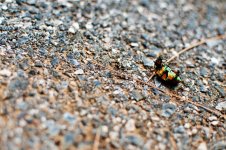Hello,
I have just joined this forum as a brand new 'Nikonite' and this is my first post so please excuse me if my question has already been discussed in other posts.
I have a D3100 which I am very pleased with and, just this week, I purchased the AF-S Nikkor 35mm f/1.8 prime lens. The main reason was to try to improve my internal, low light shots without the need to use the inbuilt flash.
On reading the instructions for the lens I noticed that it recommends using the 3D-tracking (11 points) setting for AF Area to get clearest results. I would really welcome any suggestions and advise about the best settings for this lens. I am likely to use the lens for group photos / family photos on holiday where there will be more than one primary focus point in the image. Do owners of this lens tend to change the settings regularly to accommodate the shot set up or are there standard settings which seem to work well? If I don't use the 3D setting and set a low f stop number (such as 1.8) am I likely to see blurring across the photo in all but the single focus point?
Any help and suggestions would be greatly appreciated.
Many thanks, Alex
I have just joined this forum as a brand new 'Nikonite' and this is my first post so please excuse me if my question has already been discussed in other posts.
I have a D3100 which I am very pleased with and, just this week, I purchased the AF-S Nikkor 35mm f/1.8 prime lens. The main reason was to try to improve my internal, low light shots without the need to use the inbuilt flash.
On reading the instructions for the lens I noticed that it recommends using the 3D-tracking (11 points) setting for AF Area to get clearest results. I would really welcome any suggestions and advise about the best settings for this lens. I am likely to use the lens for group photos / family photos on holiday where there will be more than one primary focus point in the image. Do owners of this lens tend to change the settings regularly to accommodate the shot set up or are there standard settings which seem to work well? If I don't use the 3D setting and set a low f stop number (such as 1.8) am I likely to see blurring across the photo in all but the single focus point?
Any help and suggestions would be greatly appreciated.
Many thanks, Alex

